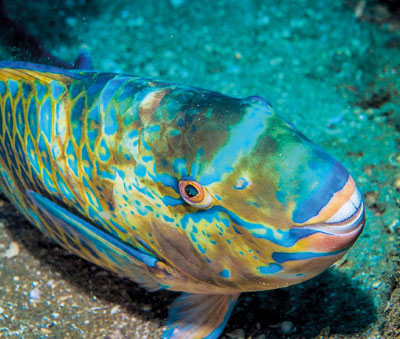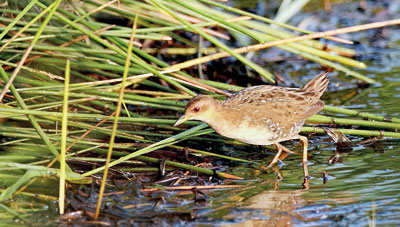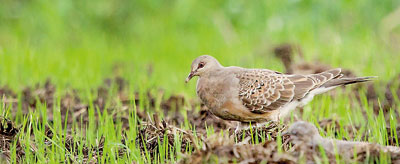
Alarm bells ring for popular reef fish
verexploited coral reef fish which are rapidly becoming rarer, conservationists believe.
Gal malu, or rock fish, are generally popular in the country and these include varieties of grouper and parrot fish (girawa).
The National Aquatic Resources Research and Development Agency (NARA) initiated a study in January to asses status of ‘edible reef fish’ commonly known as ‘gal malu’. The study will take about a year, the Sunday Times learns.
“The size of fish caught is smaller on average. Fishermen now must use more fishing gear to catch a similar volume of fish they caught a decade ago. This alone indicates the depletion of edible ‘gal malu’ populations,” points out Dr Sisira Haputantri – the head of Marine Biology Division of NARA.
The killing of a human-sized humphead wrasse (cheilinus undulates) in Unawatuna by spearfishing two weeks ago helped intensity demands for a ban on spearfishing.
The Director General of the Department of Fisheries & Aquatic Resources, M C L Fernando, said a proposal to ban spearfishing is now being reviewed by the government’s law drafters.
Action has been also taken to ban the fishing of tomato grouper (cephalopholis sonnerati) – a beautiful coral fish known as ‘ran thambuva’ locally. Tomato grouper inhabits holes in the reef with cleaner shrimp and helps maintain the hiding places by fanning out sand. Scarlet shrimp and painted shrimp are high value items in the ornamental fish trade and without the groupers, the shrimp populations would die out.
Many other reef fish are threatened by overfishing and high consumption locally and overseas. The SundayTimes reported last week that the Sub-Aqua Club has appealed to the Minister of Fisheries to protect 15 large coral fish. Most of them are groupers and listed under threatened categories in the International Union for Conservation of Nature Red List with the humphead wrasse being listed as ‘endangered’. However, the DG of the Fisheries Department is not convinced of the threat facing these fish and insists on a study to assess the situation.
But marine biologists and divers that the Sunday Times contacted say their encounters with large reef fish are becoming rarer, which itself is an indication of their vulnerability.
Meanwhile, news emerged this week that the Fisheries Minister Mahinda Amaraweera wants to ban the fishing of parrotfish.
When contacted, the minister also said that the fishing of parrotfish no smaller than 500 grams will not be allowed. But, the Sunday Times found out from the DG of Fisheries that there are no immediate plans to ban the fishing of parrotfish and that such a move would be based on the study on reef fish.
The parrotfish inhabits coral reefs and feed on algae growing on the reef. There are about 10 different species of parrotfish in Sri Lanka. Thankfully, locally there is not much demand for it as a food fish.
Unfortunately though, this beautiful fish is in high demand among Chinese. There are suspicions and fears that the appearance of parrotfish in local supermarkets is to cater to demand from increasing numbers of Chinese living and visiting Sri Lanka.
Arjan Rajasuriya Coordinator, Coastal & Marine Programme IUCN Sri Lanka emphasises that fish stocks of Sri Lanka need to be monitored regularly, especially to check whether demand has grown in recent years for species that had not been sought-after previously.
He also notes that reef fish are threatened due to pollution, invasive alien species, climate change, and illegal fishing methods such as dynamiting. Conservation is necessary before its too late, he said.
Source-05/02/2017,The Sundaytimes,see mor at-http://www.sundaytimes.lk/170205/news/alarm-bells-ring-for-popular-reef-fish-227272.html

Save Kirala Kele, a cry from environmentalists

In December, a Baillon’s Crake a rare migratory bird to Sri Lanka was spotted in Kirala kele In December,
Kirala Kele in Sinhala means ‘forest of kirala trees- or a ‘mangrove forest’. It covers an area of 1,800 ha with 310 ha of it being designated a wetland located at the exit of the Southern expressway in Godagama about three km from Matara town.
In December, a Baillon’s Crake a rare migratory bird to Sri Lanka was spotted in Kirala kele. The bird was seen in a particular area of the wetland, and bird watchers flocked to the wetland to see this rare bird. Subsequently more rare migratory birds such as the grey-headed lapwing, turtle dove, comb duck, marsh and even the greater spotted eagle were sighted in a small stretch of the wetland.
Kirala Kele earlier came under the purview of the Southern Development Authority. It was deemed a sanctuary in 2003 and declared as a conserved area under the ‘Sri Lanka – picturesque sites programme’ by a special gazette notification. Kirala kele is made up of different types of wetlands – marshland, mangrove areas, paddy lands, and irrigation canals – as well as numerous home gardens as it borders populated villages. Several encroachments are visible in many areas and concerned environmentalists have brought to attention the urgent need to protect it.
Ruhuna University’s Prof.Saman Chandana Ediriweera who has been researching the biodiversity of Kirala Kele for several years says, ” the area is an ideal wetland habitat for many organisms and can be considered as one of the most valuable conserved areas in the Matara District.” According to a study conducted by IUCN Sri Lanka, 83 plant species, 25 species of fish and 13 mammal species including the endemic Purple-faced Leaf Monkey inhabit Kirala Kele. The study recorded 103 bird species of which 48 were wetland birds and with the recent sighting of rare birds the number would be higher, Prof. Ediriweera said.
He warned that recent human activities within the premises of sanctuary would prove harmful to the ecosystem. He identifies garbage dumping, removal of vegetation, hunting, spread of invasive weeds as major threats to the wetland. Prof. Ediriweera says authorities should take immediate steps to curb these threats and save Kirala Kele wetland.
As Kirala Keleis a protected area, and now in the absence of a Department of Wildlife Conservation (DWC) field office in Matara, it comes under the purview of the field office at Kalamatiya.

Meanwhile Kalamatiya wildlife ranger Uthpala Adaranga said they regularly visit the sanctuary, but as private lands can exist inside a ‘sanctuary’, they are powerless to stop activities within the sanctuary that could be inimical to its ecosystem. In addition Kalamatiya is located about 50km away from Matara, posing a difficulty to monitor this protected area regularly. Environmentalists in Matara have highlighted the need for a DWC office in Matara so that quick action could be taken when the need arose.
In addition to being an important habitat in 2010 a plan was initiated to promote Kirala Kele as a tourist attraction with World Tourism Day celebrations being held in Kirala Kele. But the drive to promote it as a tourist destination didn’t last long.
http://www.sundaytimes.lk/170205/news/save-kirala-kele-a-cry-from-environmentalists-227215.html
Sri Lanka launches tender to develop natural gas site in Mannar Basin
REUTERS: Sri Lanka has launched a tender to develop a gas block in the Mannar Basin off its northwest coast, vacated when Cairn India pulled out of an exploration project in 2015 as oil prices plunged.
Sri Lanka produces no oil and is dependent on imports but Cairn India Ltd discovered gas in the area in 2011. The government claims seismic data shows the potential for more than one billion barrels of oil under the sea in a 30,000 sq km area of the Mannar Basin.
It invited companies to undertake appraisal and development of gas discoveries and prospects in a 2,924 sq km offshore block in the basin, the Petroleum Resource Development Secretariat (PRDS) said on its website yesterday.
“The block will be offered for licensing this year, including the Barracuda and Dorado gas-condensate discoveries. A data package will be available containing well data and some 2,600 sq km of 3D seismic coverage,” it said. It also said the remaining blocks off Sri Lankan shores will be released via a bidding round in the fourth quarter of this year. London-based WesternGeco plans 2D and 3D spec surveys ahead of the bids off the east coast and in the Mannar Basin, while the government has planned some airborne surveying, the PRDS said.
Cairn India, which is now being taken over by Vedanta Ltd, said in 2011 that it struck a 25-metre hydrocarbon column showing primarily gas with “other liquid hydrocarbon potential” in the CLPL-Dorado-91H/1z wildcat well, drilled at a water depth of 1,354 metres (4,442 feet). It exited the project in 2015 after a nearly 50 percent drop in crude oil prices. Since the end of a 25-year civil war with Tamil separatists over seven years ago, Sri Lanka has tried to reinvigorate oil and gas exploration. Importing oil cost the island US $ 2.7 billion in 2015. From the mid-1960s to 1984 American and Russian companies explored the Cauvery Basin off the northern shore, but only traces of oil were found and no commercial oil was produced.
Source-14/02/2017-Dailymirror,See more at: http://www.dailymirror.lk/article/Sri-Lanka-launches-tender-to-develop-natural-gas-site-in-Mannar-Basin-123766.html#sthash.d6Inq1jY.dpuf




